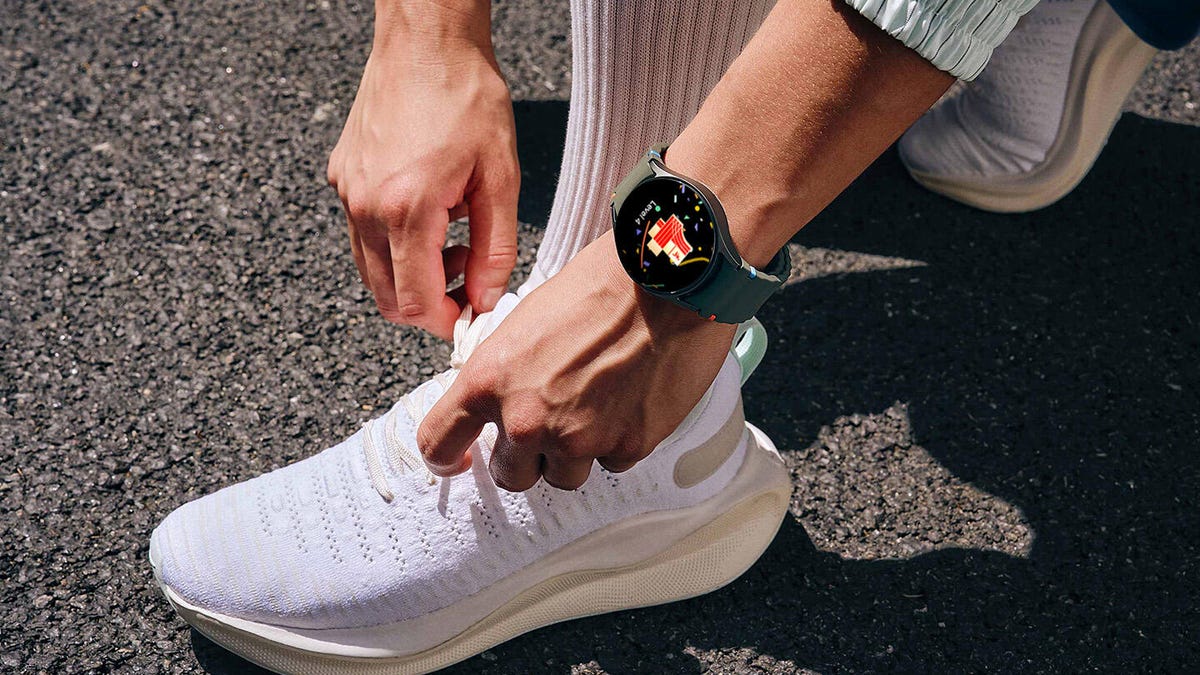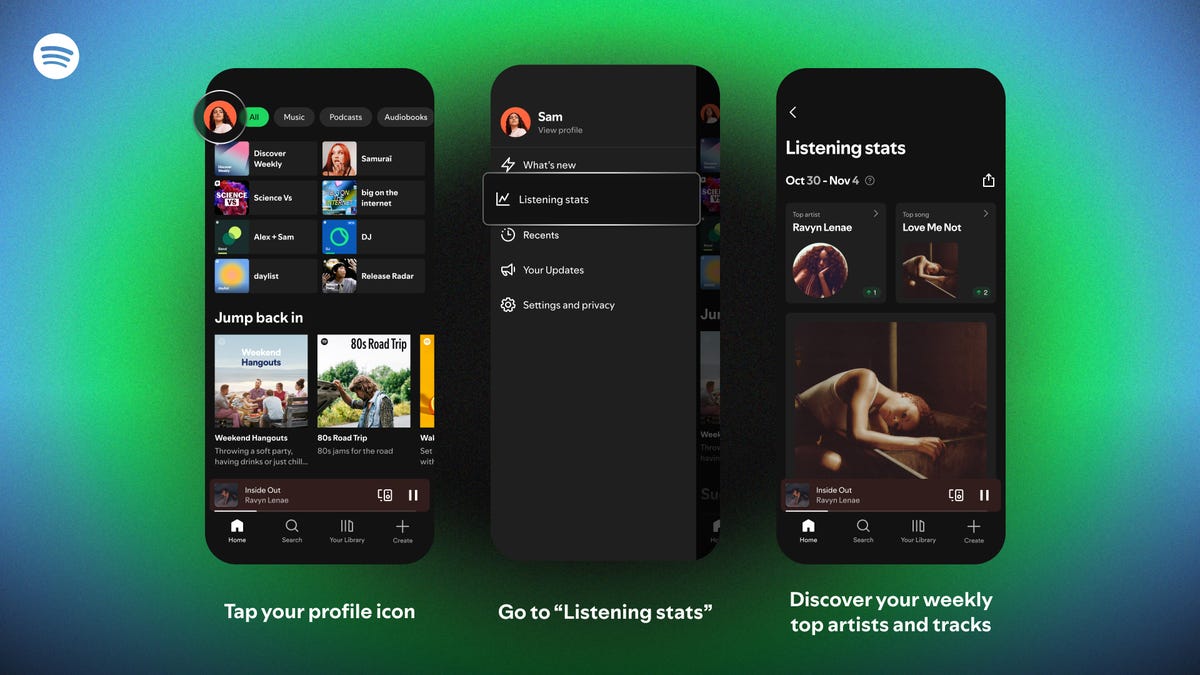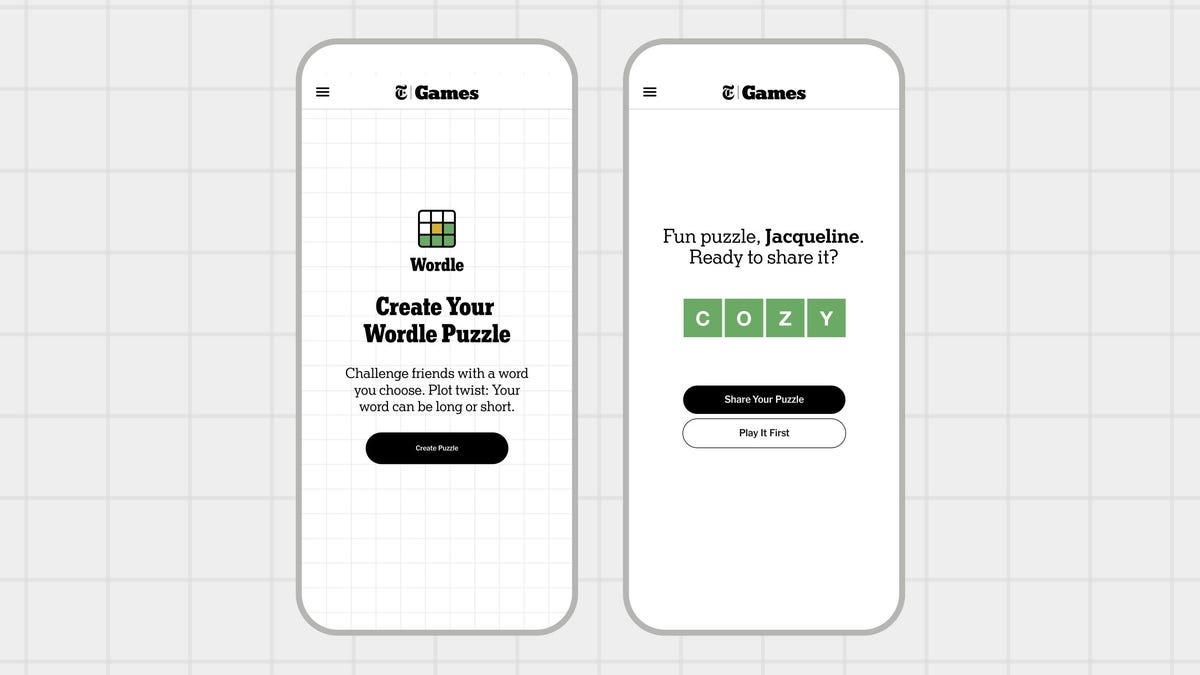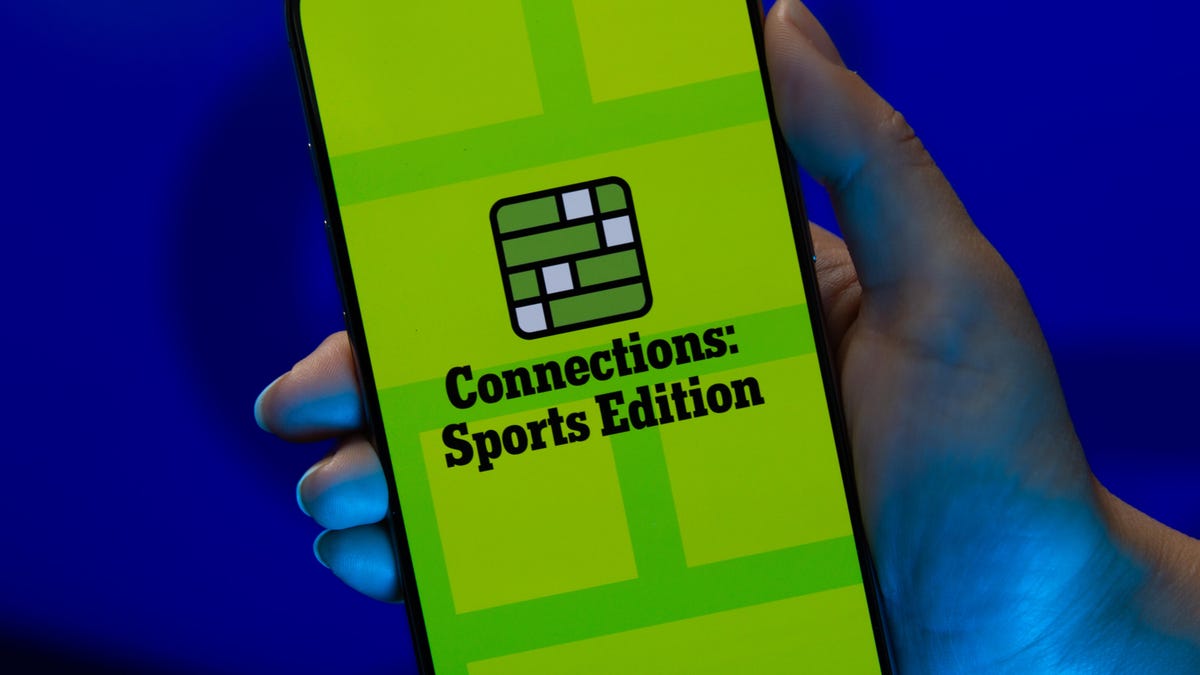Technologies
A Sneak Peek at Samsung’s Plan to Help Us Defy Aging With the Galaxy Watch
Samsung’s newest Galaxy Watches will feature AI-powered sleep and fitness coaching and the first-ever noninvasive blood analysis that can help users fend off disease and support healthier aging.

Samsung’s Galaxy Watches are taking preventive care and healthy aging to the next level with personalized coaching and a new blood analysis feature you can use right from your wrist, no needle necessary. The update is part of a broader push by Samsung to help people take action on their health in the moment, to fend off chronic illness in the long run. I spoke with Dr. Hon Pak, Samsung’s senior vice president and head of digital health, to get a closer look at what’s coming to the Galaxy Watch and how the company is pushing the boundaries of what’s possible with wearables.
«There’s illness, there’s cancer, and so many other conditions that are actually preventable,» Pak told CNET. «We know those behaviors are important, but in our busy lives, it’s often hard to keep them up. At Samsung, our mission is to meet people where they are and help support those healthy behaviors in a meaningful way.»
The new tools are expected to debut alongside the next Galaxy Watch in July and include a noninvasive blood test that measures antioxidant levels (or carotenoids), a cardiovascular health assessment, personalized sleep coaching and an AI-powered run assessment with live feedback to help you train smarter.
«What we really think we can do is bring this data about sleep, nutrition, activity and stress, and really contextualize it for the user,» Pak said.
At a time when there are a dizzying number of smartwatches and wearables available for consumers to choose from, Samsung aims to stand out by evolving its Galaxy Watch from a passive tracking device into a proactive health monitor. The goal is to help people take control of their health and keep them on track long-term. With more than 68 million people worldwide on Samsung Health, the company hopes to bridge the gap between that brief snapshot of data collected at the doctor’s office and the continuous health data collected by wearables that can help paint a more complete picture of your health.
Antioxidant detection, no needle needed
Beta-carotene is just one example of the many naturally occurring carotenoids, or antioxidants, found in vegetables like carrots and sweet potatoes that can help neutralize toxins (free radicals) in the body, according to the National Institute of Health. These toxins, typically caused by stress, poor diet, smoking and aging, can build up over time and contribute to serious health problems like cancer, heart disease and premature aging. Currently, one of the most common ways to detect carotenoid levels is through a lab test by having your blood drawn.
With a new feature called the Antioxidant Index, the next Galaxy Watch will be able to measure carotenoid levels in the skin instantly without needles or lab work. Instead, you place your thumb on the back of the watch sensor for a few seconds.
«This is a noninvasive way to see how your diet and lifestyle may be affecting your antioxidant levels,» Pak said. «We use LED light sensors measuring four different wavelengths to detect beta-carotene in the skin. And we’ve validated the readings [from the Galaxy Watch] against levels in the blood,»
On the Galaxy Watch, people will receive a score from «low» to «adequate,» with some general guidance on habits to improve antioxidant levels. Longer-term, Samsung is working on more targeted AI-driven recommendations tied to specific recipes, supplements, and nutrition plans.
«If your levels are low, we might suggest more leafy greens or sweet potatoes,» Pak said. «Eventually, we want to tie this to personalized recommendations through nutrition coaching and recipe suggestions.»
Running
Samsung is also debuting a 12-minute run test to help Galaxy Watch owners establish a baseline fitness level, ranging from beginner (level one) to marathon-ready (level 10). Once the assessment is complete, the watch will generate a personalized training plan to help people reach specific distance goals, like running a 10K or half marathon.
You’ll also get real-time encouragement from an AI coach on the watch to help push you through a run, similar to Apple’s new Workout Buddy feature on the Apple Watch. Samsung’s AI coach will give guidance verbally like «push a little harder» or «ease up,» as well as adapt plans for future workouts based on your performance. As users progress, they’ll unlock new training challenges, making the program dynamic and goal-driven.
It’ll also help you put the training into context by showing you how it’s affecting other health indicators already on the watch, like VO2 max, a key indicator of overall fitness. Eventually, these health indicators could be used as training targets instead of just distance goals to map out a training plan.
«As we target more athletes clearly, that’s going to be something people are going to want to do,» Pak said. «That’s a teaser for what’s to come.»
Sleep
Sleep is another core puzzle piece in Samsung’s holistic approach to preventive care, and a major indicator of overall health, Pak said. Poor sleep has been linked to serious long-term risks like dementia, cardiovascular disease and obesity.
«A lot of body repair happens during sleep, both physical and mental,» he said.
A new feature called Bedtime Guidance builds on the Galaxy Watch’s existing sleep tracking tools, like sleep stage analysis and sleep apnea detection, by offering personalized recommendations for optimal sleep and wake times. It starts with a three-day analysis of your sleep habits to determine your unique circadian rhythm and sleep pressure (also known as sleep debt). From there, the watch provides tailored advice to help improve metrics like total sleep time and energy score based on your own sleep data.
Rather than simply sending a generic reminder to get eight hours of sleep, Bedtime Guidance recommends a personalized sleep and wake window. The goal is to help you recover from nights of poor or irregular sleep and improve alertness during the day. So, for example, if you were jet-lagged, this feature could (in theory) help reduce your sleep debt and get your sleep schedule back on track faster.
The Galaxy Watch also takes a more nuanced approach to coaching by factoring in real-world inputs collected by the watch, your Galaxy phone, and other Samsung devices when available. For example, it may suggest improving your sleep environment by lowering the thermostat or making the room darker.
«We have SmartThings connected with Samsung, so it can control your environment, things like humidity, temperature, lighting, or even automatically closing the blinds. We also have medical features, like sleep detection. After just a couple of nights, we may be able to detect signs of sleep apnea and suggest that you seek medical care,» Pak said.
Vascular Load measures strain on the heart
Another new metric is Vascular Load, which reflects the cumulative stress on your heart and vascular system while sleeping; stress that ideally should decrease overnight. Pak said the Galaxy Watch uses pulse-wave analysis and optical sensors to track trends in arterial stiffness and overall cardiovascular strain. These readings are translated into a low-to-high scale to help you understand how behaviors (like sodium or alcohol intake) may be contributing to long-term heart disease risk.
«Things like poor sleep, a bad diet or chronic stress can elevate your vascular load,» Pak said. «This is one way we’re trying to make those connections visible in a meaningful, measurable way.»
Who gets these features, and how much will they cost?
The new features are part of the One UI 8 Watch, which will be available on the newest Galaxy Watch series starting this month through a beta program (currently limited to customers in the US and South Korea with a Galaxy Watch 5 or newer). Vascular Load and Antioxidant Index are being introduced as Labs features, which means they’re considered experimental and available for early preview before their official release.
All of these features are expected to make their official debut with the next Galaxy Watch, which we expect to arrive in July. The availability of each specific feature will depend mostly on whether your Galaxy Watch has the advanced LED sensors necessary to power them. Vascular Load and Antioxidant Index, for example, will be available only on the Galaxy Watch Ultra and later, while the Running Coach feature will require the Galaxy Watch 7 or later.
Pricing is also still up in the air. During our interview, the company said it’s exploring a premium subscription model similar to Fitbit Premium or Garmin’s new Connect Plus, which requires a monthly subscription to unlock advanced coaching features. Ideally, the features would be included free with the new watch, while older models could access them behind a paywall. We’ll update this article as soon as Samsung shares more details on model eligibility and pricing.
Samsung’s future health plans
Optically based glucose measurement may not be too far off, Pak suggested. As Samsung continues to explore noninvasive medical testing, it’s clear the company sees wearables playing a growing role in day-to-day health tracking and as preventive care. Samsung’s goal is to make clinical-level insights accessible at home and turn wearable data into actionable guidance before a problem becomes serious.
«We believe wellness isn’t just one thing,» Pak said. «It’s activity, nutrition, mental health, and sleep combined.»
Whether it all works as intended (and whether people actually stick with it) will depend on Samsung’s execution. But one thing is clear: Samsung is making a serious play to turn your wrist into a true health hub.
Technologies
Spotify Brings Wrapped Energy Year-Round With Friend-Sharing Stats
The music service introduced new ways for music nerds to share their listening habits with friends.

It can be a long wait for Spotify Wrapped, the end-of-year promotion that allows Spotify users to view and share their listening habits. Now, users can keep an eye on those stats daily, plus share their listening habits with friends.
You can view your Spotify usage statistics every 24 hours and share your updates via social media services, such as Instagram Notes or Spotify Messages. The new share icon gives you access to eight different services where you can post your stats.
Every week, you’ll get updates on your top artists and songs from the past month, and Spotify will recommend new playlists. The app also gives you a «special highlight» based on a specific artist or song.
To access your personal musical data, click on your profile in the top left corner of the app and scroll down to «listening stats.»
Don’t miss any of our unbiased tech content and lab-based reviews. Add CNET as a preferred Google source.
The new features are somewhat similar to Spotify Wrapped, the service’s annual end-of-year review of users’ listening habits, which is designed to be shared. Every year, Spotify adds extra details to Wrapped, such as assigning users a listening personality or a city that supposedly reflects their music tastes. It’s been the most popular way for Spotify users to view and share their music listening in the past. A number of third-party services do the same thing, including Volt.fm.
Read more: Best Music Streaming Services
Spotify is the world’s largest music streaming service, offering 100 million tracks and serving more than 713 million users. In addition to its $12-per-month subscription service, Spotify also offers a free, ad-supported option.
Technologies
Wordle Gets Personal: You Can Now Make and Share Your Own Puzzles
If you’re a Wordle obsessive, you can now make your own inside joke puzzles to send to friends.

Wordle’s an immensely popular New York Times word game (we post the answers daily), but it’s not the most personal game in the world. Answers such as GUISE and PERIL are tricky, but generic. Now, Wordle fans who have ever dreamed of making their own puzzles can test their friends and family by creating their own Wordle creations up to seven letters in length.
No surprise, you have to be a New York Times Games or All Access Subscriber to use this feature. If you are, you’ll find the Create a Puzzle option available from the top menu above today’s Wordle. While you must be a subscriber to create your own personalized puzzle, you can share it with anyone — they only need the link, not a subscription, to complete your Wordle.
Don’t miss any of our unbiased tech content and lab-based reviews. Add CNET as a preferred Google source.
Enter a word, and the site will tell you if it is available. Real Wordle limits you to five-letter words, but the puzzle-making feature lets you choose words between 4 and 7 letters.
The usual dictionary rules apply, and so curse words, some pet names, and obscure inside jokes are essentially out. If your cat is named TANGO, that’s there, but RINGO is not an option. You can drop a proposal with a single word like MARRY, but MARRYME will get rejected since that’s two separate words.
Word chosen, you can then fill out your name and add an optional hint, and the feature will generate your puzzle with a link you can send around. Unlike standard puzzles, your puzzle doesn’t appear to reset after a day, so whoever you send it to doesn’t need to rush to solve it.
Looking for the most recent Wordle answer? Click here for today’s Wordle hints, as well as our daily answers and hints for The New York Times Mini Crossword, Connections, Connections: Sports Edition and Strands puzzles.
Technologies
Today’s NYT Connections: Sports Edition Hints and Answers for Nov. 8, #411
Here are hints and the answers for the NYT Connections: Sports Edition puzzle No. 411 for Saturday, Nov. 8.

Looking for the most recent regular Connections answers? Click here for today’s Connections hints, as well as our daily answers and hints for The New York Times Mini Crossword, Wordle and Strands puzzles.
Today’s Connections: Sports Edition is a tricky one. The theme of the purple category is also a word hidden among the answers, but of course, it doesn’t end up in the purple group. If you’re struggling but still want to solve it, read on for hints and the answers.
Connections: Sports Edition is published by The Athletic, the subscription-based sports journalism site owned by the Times. It doesn’t show up in the NYT Games app but appears in The Athletic’s own app. Or you can play it for free online.
Read more: NYT Connections: Sports Edition Puzzle Comes Out of Beta
Hints for today’s Connections: Sports Edition groups
Here are four hints for the groupings in today’s Connections: Sports Edition puzzle, ranked from the easiest yellow group to the tough (and sometimes bizarre) purple group.
Yellow group hint: Brawl.
Green group hint: The Steel City.
Blue group hint: They once played in Oakland.
Purple group hint: Not always made of cardboard.
Answers for today’s Connections: Sports Edition groups
Yellow group: Fight.
Green group: A Pittsburgh athlete.
Blue group: Parts of the Las Vegas Raiders’ logo.
Purple group: ____ box.
Read more: Wordle Cheat Sheet: Here Are the Most Popular Letters Used in English Words
What are today’s Connections: Sports Edition answers?
The yellow words in today’s Connections
The theme is fight. The four answers are box, duke, scrap and spar.
The green words in today’s Connections
The theme is a Pittsburgh athlete. The four answers are Panther, Penguin, Pirate and Steeler.
The blue words in today’s Connections
The theme is parts of the Las Vegas Raiders’ logo. The four answers are eye patch, helmet, shield and swords.
The purple words in today’s Connections
The theme is ___ box. The four answers are batter’s, luxury, penalty and press.
-

 Technologies3 года ago
Technologies3 года agoTech Companies Need to Be Held Accountable for Security, Experts Say
-

 Technologies3 года ago
Technologies3 года agoBest Handheld Game Console in 2023
-

 Technologies3 года ago
Technologies3 года agoTighten Up Your VR Game With the Best Head Straps for Quest 2
-

 Technologies4 года ago
Technologies4 года agoVerum, Wickr and Threema: next generation secured messengers
-

 Technologies4 года ago
Technologies4 года agoBlack Friday 2021: The best deals on TVs, headphones, kitchenware, and more
-

 Technologies4 года ago
Technologies4 года agoGoogle to require vaccinations as Silicon Valley rethinks return-to-office policies
-

 Technologies4 года ago
Technologies4 года agoOlivia Harlan Dekker for Verum Messenger
-

 Technologies4 года ago
Technologies4 года agoiPhone 13 event: How to watch Apple’s big announcement tomorrow
